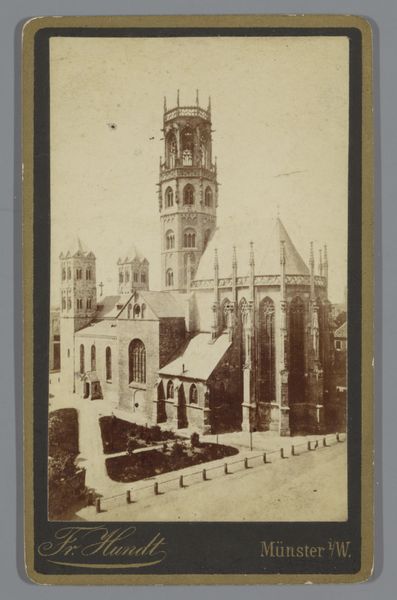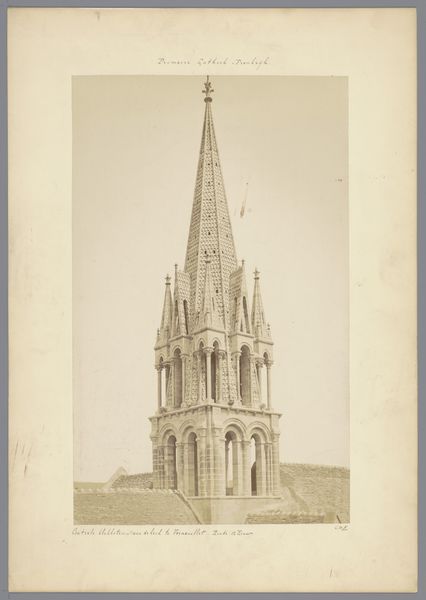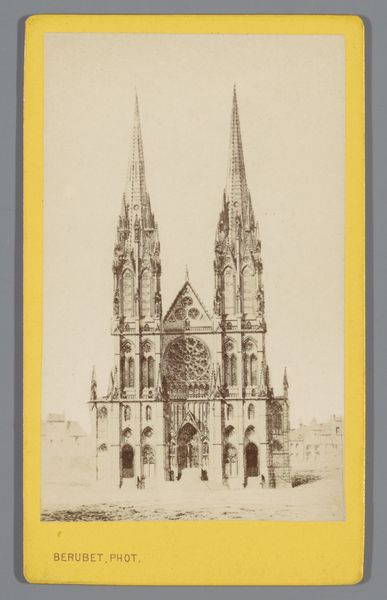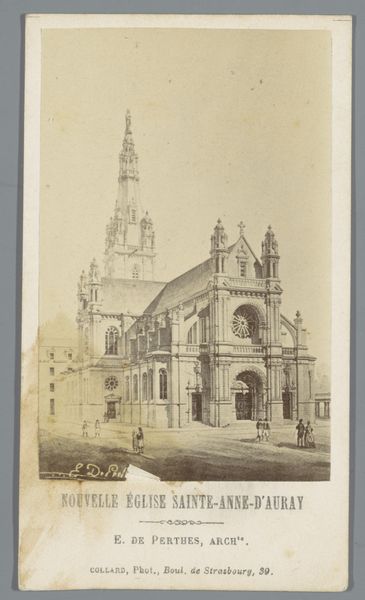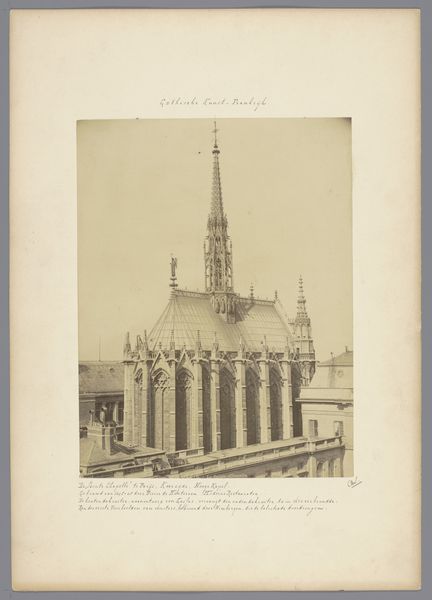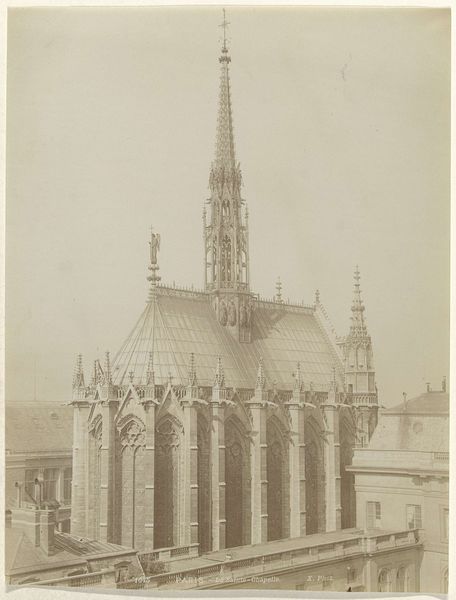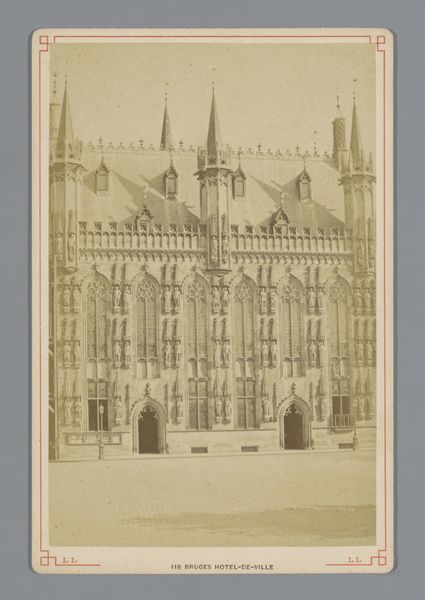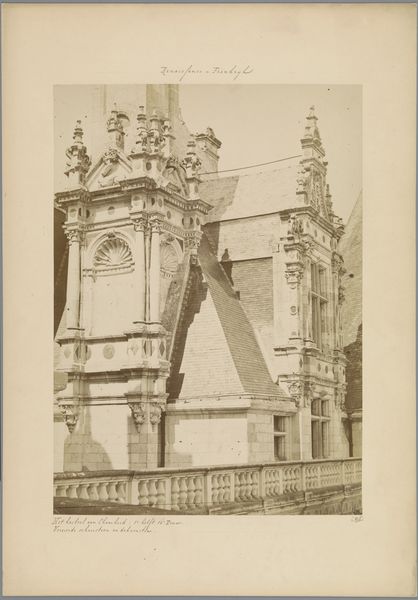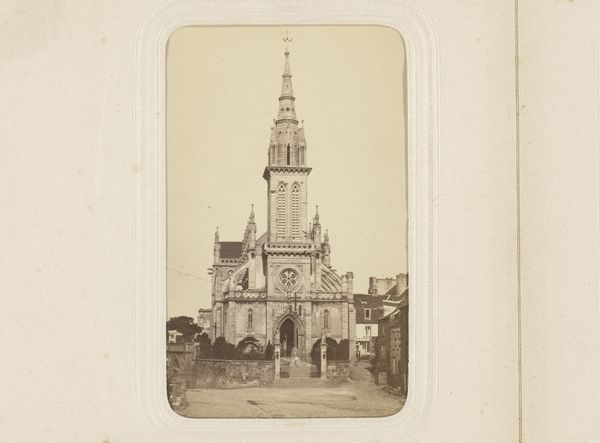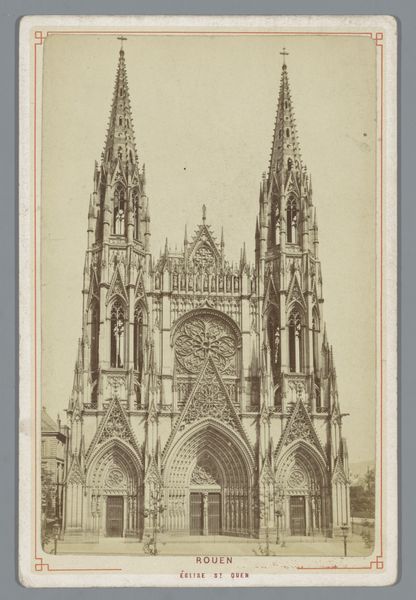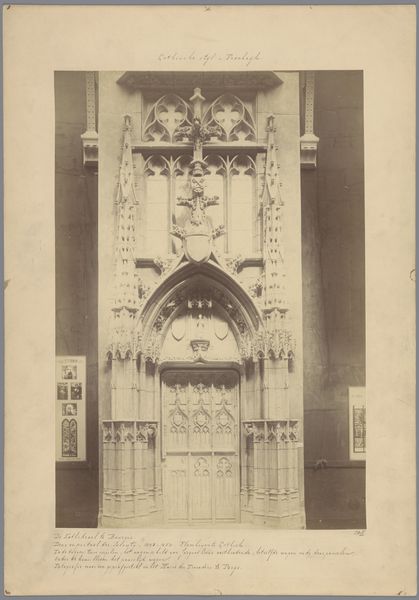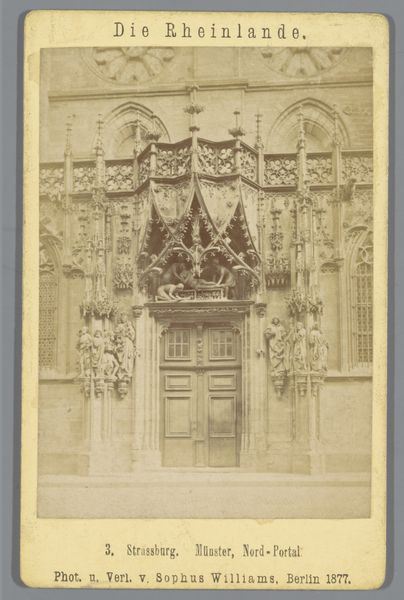
Dimensions: height 164 mm, width 107 mm
Copyright: Rijks Museum: Open Domain
Editor: This gelatin-silver print, titled "Gezicht op de Sainte-Chapelle te Parijs" and attributed to Étienne Neurdein, presents a serene cityscape dating from around 1870 to 1900. What strikes me most is the almost ethereal quality of the light and how it captures the Gothic architecture. How do you interpret this work, considering the time it was made? Curator: It's a compelling image, isn’t it? Notice how Neurdein has chosen to represent Sainte-Chapelle. The basilica isn’t merely recorded; rather, it appears as a near-mirage rising above Paris. The choice of black and white imbues the scene with a sense of timelessness, allowing the chapel to represent not just itself but the enduring power of faith and monarchy—a loaded concept in post-revolution France. Doesn't the architectural style evoke an idealized medieval past? Editor: It does, almost like a romanticized vision of history. I’m thinking about the Gothic revival and how photography began shaping cultural memory. Curator: Precisely! The sharp focus on the building's facade, set against the soft sky, hints at more than what is visible, stirring something profound within the viewer. Sainte-Chapelle was, after all, commissioned by Louis IX to house sacred relics, a physical embodiment of divine right. And remember, photography itself was then a relatively new medium, invested with notions of truth and objectivity. Does this combination create tension, or harmony, do you think? Editor: That’s fascinating. I’d say it definitely complicates our reading. Thank you for shedding light on the cultural memory embedded in it. It makes me see beyond just the architectural beauty. Curator: And seeing beyond is where true appreciation begins! It is fascinating how artists from very different backgrounds converge when engaging symbols across the ages.
Comments
No comments
Be the first to comment and join the conversation on the ultimate creative platform.
